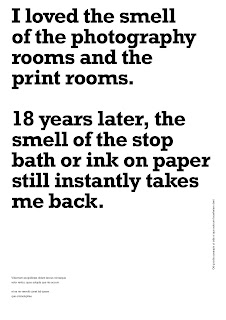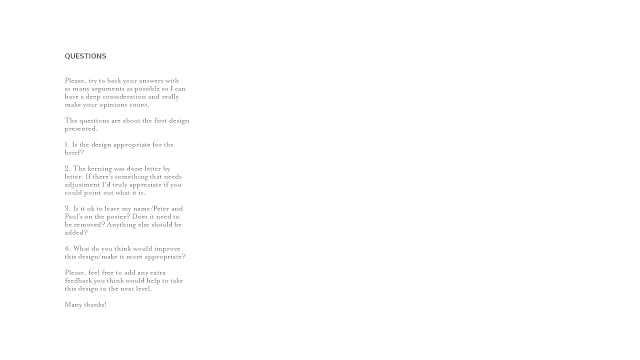This logotype was a way to express the will of C. to go back to their roots, a logo that can fit in a retro context, which is perfect since they want to bring back their popular retro bottle. Also, the idea of creating something like a coat of arms would tie their values very strongly, making their users feel that they belong to something bigger and they are the portrayer of C.'s values.
The logo didn't work well in capital letters and sans-serif as it is a word that is difficult to read for having many vertical lines. Instead, the design of the logo was tried in script typography with typefaces like Alisha (weak), Kinescope (doesn't look professional nor reliable), Lust (too similar to Coke) and Funkydori as well as Melts Script, Cocktail and Sneaker.

Funkydori was the one eventually used and it only needed a few corrections, fixing the ligatures and modificating a 'p' that goes along another 'p' to make them different so they had a more craft feel to it. The sketches and the design process will be shown on the design boards for privacy.
A symbol that C. has always had is a ship. At first, it seemed pointless to design a ship that is a bit redundant, as the name of the brand points out this type of ship. But the design was lacking an element of illustration, so it was tried out.
The ship was created only using circles of the sizes corresponding to the Fibonacci sequence. Using these sizes and the anchor points of the circles (at 0, 45, 90, 135, 180, 225, 270 and 315 degrees) the ship was built as well as some sea waves.


The logotype and the isotype were put together in different ways replicating the designs from the board on Pinterest. As mentioned before, in this board there's a lot of repetition of script typefaces going alongside all caps sans-serif. Types like Vinyl, Atrament or Commuters from TypeKit as well. The one that made more contrast alongside Funkydory with more eccentric connotations was Komu A.

Alongside with the logotype, colour experimentation with flavours was an important step to define the colour palette for this visual identity. It was noticed that the four flavours (strawberry, orange, lemon and apple) are all on one side of the colour wheel, and all of them worked well with purples and blues. The colours were taken from the Japanese book the dictionary of colours.

For this project, it would be interesting for LEDF and their client to see early approaches to the design of the cans. Their current design is very outdated, but not in a retro way. More like in a careless way. This is some experimentation with the colours earlier explored as well as the isotype and logotype (showed in the design boards). These approaches to the design of the cans were only to determine the background of the design and its possibilities. When playing with gradients, it was noticed that the purple and turquoise alongside the colours for the flavours represented different colours the sky can have (although, the green colour for the apple flavour is arguably a common colour in the sky). These combinations representing sunsets can be very appealing to the target audience of 17-26, as they are starting to get in touch with the nightlife. Also, the colours feel very warm and represent the paradise the Canary Islands are considered. The use of these supporting colours will ensure a consistency and coherency accross the visual identity.
3 different mockups for the cans were tried out to see which one worked best, as they are going to be designed for the landing page. They are shown on the design boards. The flavours have been typed with the typeface Alisha to enhance what the scale of semantic difference point out: that this is a brand that comes across as more crafted. The can has been designed in such way that a 17-26 years old wants to hold and brag about.
The landing page is a way to walk the user through the different experiences (flavours) and novelties of the brand. The path starts with a presentation, then with a highlight of their new role in the culture (taking the lead of the cultural scene they've always been part of), an introduction to the contests and how to interact with them on social media and the new availability of their products in important fast food chains. Every step is clearly indicated by each screen, having a line that connects everything from the beginning until the end. Also, on the bottom right of the site, the user can see where they are on that path. There's a menu at the top right of the page, the logo on the top left and the social media on the bottom left. Each page has a can of a different flavour, so the user is formally re-introduced to them. The tagline is at the top "No es para todo el mundo" (It's not for everyone). Everything is also interconnected with playful triangular shapes, as triangles are mountains, symbols of the volcanic islands. The backgrounds have an added grainy texture so they look more natural and the gradients simulate the light. On each screen, the text changes sides to keep the audience engaged.
The palm tree shown in the picture is a local tree, the singer is Woodkid, but he was chosen because of his features, which match the locals'. Also, the picture used has a clean background that is very easy to remove for the subject to be placed in a different context, something not very common in free pictures of singers in concerts. The pictures of the palm tree, the singer, the phone and the mockup of the Burger King sign were tinted with the same yellow as the background to make them stand out less than the cans, and also merge better with the rest of the design.
In this landing page, the language is dialectical very local and common in the Canaries, so it doesn't feel too generic or impersonal. The phone shows an Instagram story which is a call to action for people to win 2 tickets for a concert. The last page explains that fast food chains are now selling C. to their customers, and there's a text that suggests users go to a specific location in the area C. wants to get stronger. In that specific place, they could have something to encourage people to order that drink instead of other sodas.





















































































































